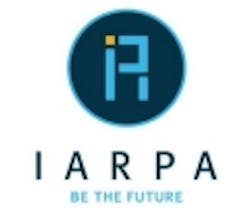Intelligence researchers approach industry for leapfrog technology ideas to make revolutionary improvements in data collection
McLEAN, Va., 20 June 2010. U.S. intelligence information researchers are asking industry for technology proposals for dramatic improvements to the value of intelligence information from all sources.
Proposals should involve intelligence technology tools for creating new sources of information; new ways of identifying and assessing intelligence collection systems; sensor technologies for collecting broad signal or signature types with extended reach and sensitivity, as well as small size, weight, and power consumption; tagging, tracking, and location (TTL) techniques; electrically small antennas; intelligent distillation of useful information; and trusted data collection from a variety of sources.
The Office of Smart Collection of the U.S. Director of National Intelligence's Intelligence Advanced Research Projects Activity (IARPA) in McLean, Va., issued a broad agency announcement (IARPA-BAA-10-09) Friday for a wide variety of smart intelligence collection technologies. The BAA will remain open for 15 months, and closes on 20 Sept. 2011.
IARPA is in charge of high-risk, high-payoff research that has the potential to provide the U.S. with an overwhelming intelligence advantage over its future adversaries. Research areas of particular interest include:
-- innovative methods or tools for identifying and/or creating novel sources of new information;
-- new ways of identifying and assessing collection systems for dramatically improved performance;
-- sensor technologies that dramatically improve the reach, sensitivity, size, weight, and power for collection of broad signal or signature types;
-- nagging, Tracking, and Location (TTL) techniques;
-- electrically small antennas and other advanced RF concepts;
-- agile architectures that intelligently distill useful information at the collector; and
-- innovative means and methods to ensure the veracity of data collected from a variety of sources.
This project primarily is for early stage research that may lead to larger, focused programs in the future, so periods of performance for selected contractors will generally not exceed 12 months. Several contract awards are expected. For questions or concerns, contact IARPA by e-mail at [email protected], or by fax at 301-851-7673, Attn: IARPA-BAA-10-09.
For more information on this and other open solicitations of this broad agency announcement, contact IARPA online at www.iarpa.gov. More information is online at https://www.fbo.gov/notices/885f97bc9bfba537972ecc0e7be0f7bd.
